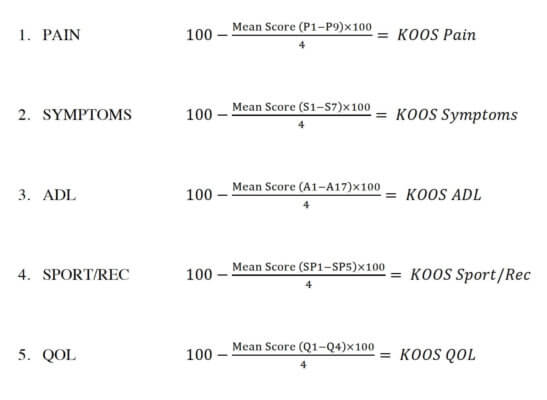The Knee Injury and Osteoarthritis Outcome Score (KOOS Score) was developed by Roos et al. in Sweden and first published in 1998 in order to create an adequate score that evaluates the functional status and quality of life of patients with any type of knee injury who are at increased risk of developing osteoarthritis, i.e. patients with anterior cruciate ligament (ACL) injury, meniscus injury or chondral injury.1
Contrary to validated scores at the time, this score is adequate to both older and younger patients.1
Patients with anterior cruciate ligament injuries and/or meniscal damage have a significantly higher risk of developing post-traumatic osteoarthritis of the affected knee in later life.2
The KOOS takes this into account and, as a Patient-Reported Outcome (PRO) instrument, it tests the impact of these clinical pictures in its content over 42 questions. It assesses possible limitations of patients with the above-mentioned knee injuries over the following 5 different dimensions:
-
Pain – 9 questions
-
Symptoms – 7 questions
-
Activities of daily living – 17 questions
-
Functionality in sports and leisure – 5 questions
-
Quality of life-related to the affected knee – 4 questions 1

